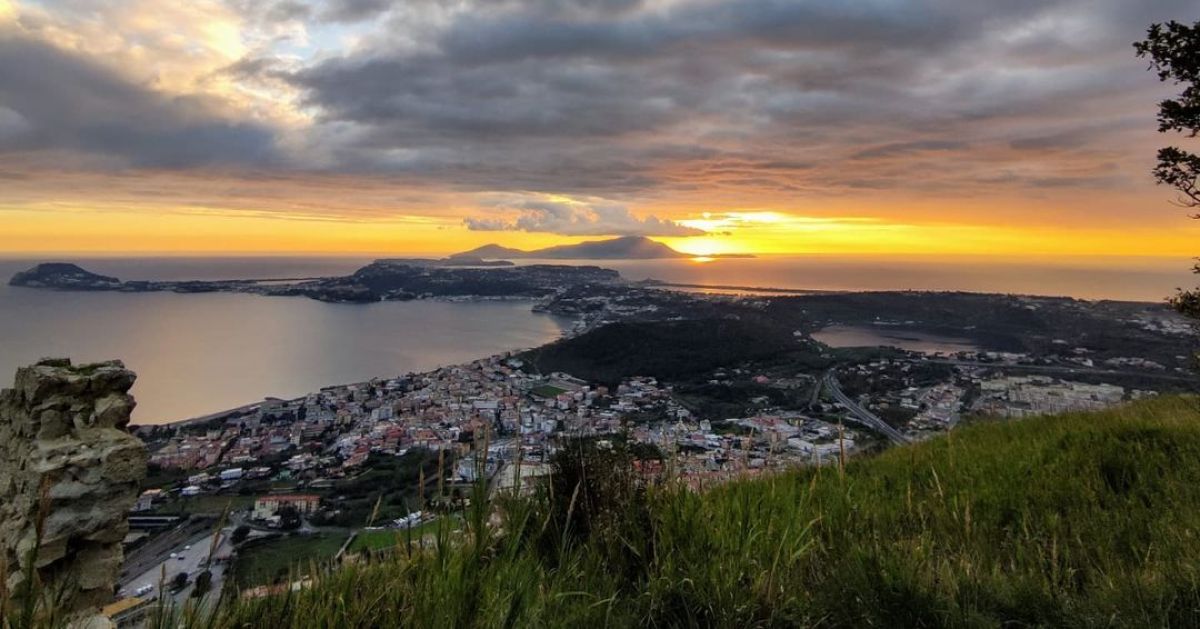With its 331 meters, it's the highest volcanic relief of the Phlegraean Fields and for this reason the Greeks called it Gauro, "majestic". Formed ten thousand years ago, it rises just behind the city of Pozzuoli and is also known as Monte Barbaro, from the name of its highest peak, located to the south.
Two other peaks are, to the north, Monte Sant’Angelo of 308 meters on which there is a small church and Monte Corvara of 290.
The caldera, with a diameter of 750 meters, takes the name of the Campiglione crater and can be reached by a passage to the south-east, the Porta del Campiglione. Formed by yellow Campanian tuff, Mount Gauro has for centuries offered building material to the Phlegraean area and to Naples, so much so that its south-western side, where the quarries were open, ended up collapsing, forming the Circo di Teiano.
The caldera, with a diameter of 750 meters, takes the name of the Campiglione crater and can be reached by a passage to the south-east, the Porta del Campiglione. Formed by yellow Campanian tuff, Mount Gauro has for centuries offered building material to the Phlegraean area and to Naples, so much so that its south-western side, where the quarries were open, ended up collapsing, forming the Circo di Teiano.

The volcanic earth is particularly fertile, so the mountain is covered with vegetation, even on the steepest sides, populated by Mediterranean scrub, while on the north-facing side chestnut trees grow luxuriantly. The Romans preferred the soils of the Gauro for the production of grapes used for the favorite Falerno wine.
The name of Mount Gauro is linked to one of the most famous battles of antiquity, dating back to the First Samnite War, in 343. Described by Tito Livio, the battle, long and bloody, finally saw the Romans led by Marco Valerio Corvo prevail over the valiant Samnites. That victory marked the beginning of Roman expansion in Italy, changing the course of history also in the Phlegraean area.
Ph: Stefano Erbaggio
Copyright video, foto e testi ©️ 2020




Comments powered by CComment